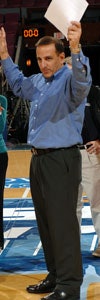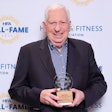Rick Giles discusses how he intends to position the new College Basketball Invitational tournament within the context of March Madness.

Q: Why challenge the postseason establishment? A: We don't expect the CBI to replace, displace or even grab headlines away from the NCAA tournament. That's still where everybody wants to go and should want to go. But there are a lot of good teams that don't get in. We had 17 games in our tournament, and 14 of them were outstanding - well played, close, enthusiastic crowds, exciting to watch on TV. So if you're looking at this tournament as a product, and you see that the fans are enjoying the product, if you see that people are willing to pay for it and teams are able to benefit and profit from it, then there's a demand. Now, it's not going to be a $6 billion product like the NCAA tournament, but it doesn't have to be in order to be successful.
Q: What separates your tournament from the NIT? A: In the NIT model, there's no direct incentive for home teams to sell tickets, because whatever they sell goes into the overall pot, and then units are shared on the backside. In our model, a school like Tulsa knows that for every dollar it brings in, it keeps 50 cents right off the top. By winning the CBI, Tulsa made eight times as much money as Ohio State did winning the NIT.
Q: Is potential payout incentive enough to enter the CBI? A: If a group of competitive athletes has just been left out of the NCAA tournament, that means they didn't do enough. They fell short. And now they're given another opportunity to compete. Well, if they don't want to do that, you've found the reason that they didn't get into the NCAA tournament. I understand that the NCAA tournament is special, but true competitors would play another team in a parking lot.
Q: Would the NCAA tournament be different if you ran it? A: Yes. One of the unique things about college basketball is the passion of the regular season, and then neutral sites are used for postseason play. I'm not sure that does justice to the fans who support those teams throughout the year. I thought that our environment on home courts was, in some cases, more exciting than watching games during the NCAA tournament, where there were routs and half-empty buildings. About midway through the first semifinal game at the NCAA Final Four, my daughter turned to me and said, "Daddy, how come there are so many more people in this building today, but it was so much louder last night in Tulsa?" I thought that was an interesting comment from a 10-year-old, because it was absolutely right on. Those 8,500 in Tulsa were rocking that building, compared to the 45,000 in San Antonio.





































